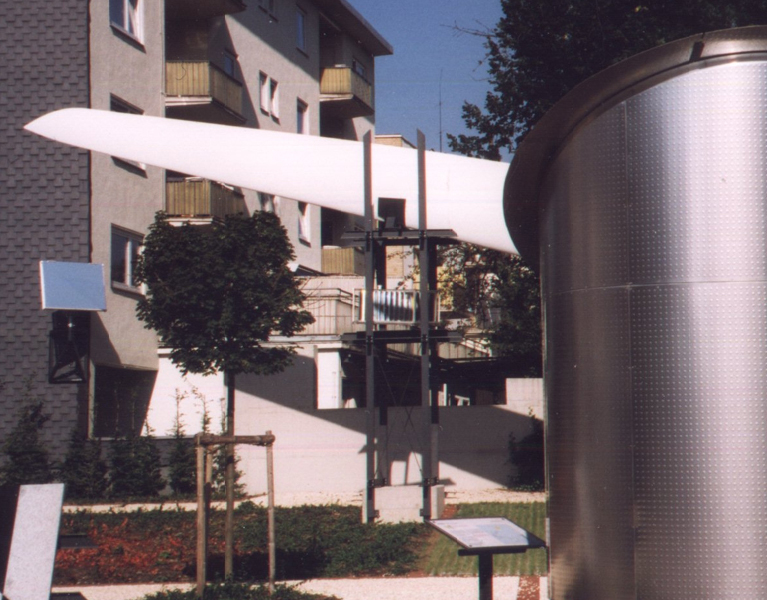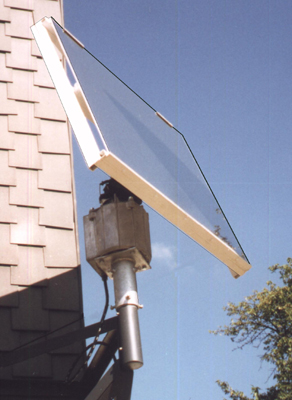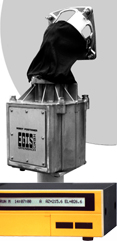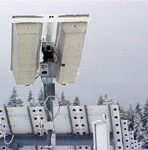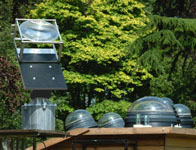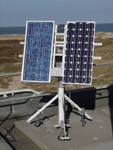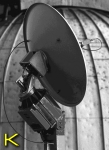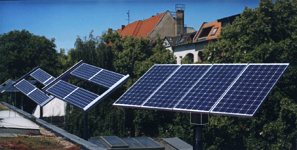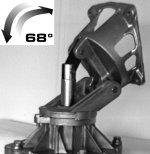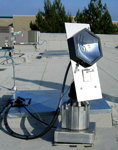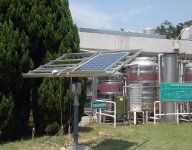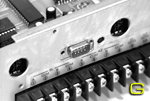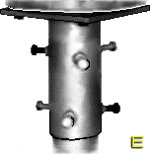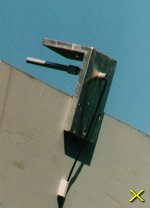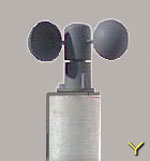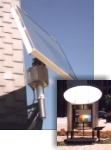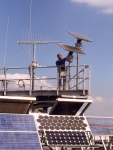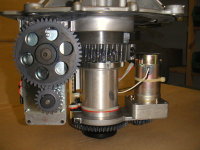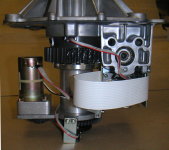The azimuth-elevation turning system consists out of the rotor outdoor unit EPR203X as well as out of the indoor unit EPS103X. There are no additional parts necessary between "mast-holders" and "panel/reflector".
The rotor outdoor unit moves the object to be positioned fully automatically and microprocessor controlled on single positions or on tracks. For this in the rotor-outside-part, made out of a weatherproof aluminum pressure die cast, two separate 24 volts motors are installed.
These drive, using corresponding mechanism, the reflector with a high precision and return-accuracy of 0.3° into the wished directions, that is done as well as in azimuth as also in elevation direction.
Due to the two completely separated drive motors there is no need of immediate calibrating each mechanical tracking path and by that the former necessary exact calibrations so as very time-extensively set-up works of azimuth, elevations, north-south-axis etc. can be done comfortably at the control box!
The u. m. azimuth elevation turning system moves, in standard-version, the objects in a 180° azimuth area. In elevation range the system suffers an elevation of 68°. Where exactly this lifting is used is up to the user: if elevation angle 0° until 68° or 25° until 90°. The system is doing this all very quietly and therefore, in contrast to many a wailing actuator motors, without boring the neighbors, naturally expectable at such a system.
The only adjustment during montage and installation of the rotor-outside-unit is rough northern-south-alignment of the alu die cast housing. Therefore only rough because all eventually needed corrections can be done at the indoor unit. Consequently we have arrived now the technology of the operation and control unit. This is to be understood as a switching and computing center, the heart of the plant. The heart consists out of a quick 8-bit-microcontroller and allows the technicians under the users a real eldorado of programming. Already the assembler will be informed of incorrect or missing connections. So the control box contains e.g. an electronic blocking and overload protection, run direction supervision and related clear-text-information.
Now we come to the spots, that are of interest for the operators and users of the system particularly. There is e.g. the memory: all data and also the operational-program is accommodated in read only memory imprescriptibly.
To manage simple and easy tracking out of the data in the computer-memory only two technical instructions are to implement into calculations, namely the last unknown, that the system could not predict:
The location-coordinates of the rotor and time with date! After input of these values into the processor by means of keyboard the processor calculates the necessary azimuth and elevation angle of lineup-spot to each sun position in shortest time.
After this computing process you may start the tracking. Due to mechanical montage errors you will aim more or less exact at the sun. However for this rotor deviations are no problem: with resp. keys meet directly the sun, all comfortable out of your armchair!
This correction causes the control computer to save the data of the now exactly gotten sun position and the previously already entered data for later use. Immediately after that you may switch to "RUN" and the rotor will track in good quality.
Comfortably and simple - is installation. However – how behaves the system in everyday-business? Via front keys of the control box comfortably correct east-west-deviations. Or you take full control over the whole system via the key field.
The comfort doesn't cease, it has now just begun. The computer is able, thanks to his future-safe construction, to respect all locations no matter if western or eastern of Greenwich, northern or southern from equator. The u. m. calculations will be done always with the same accuracy. The rotor computer will calculate for each position on the earth in which angles the sun presently is to be expected!
One of the most outstanding performance features of the system is its ability to cope with high wind speeds. Proved by Finite elements calculation for material and shape of the load carriing parts. You will recognize immediately the high durability and stiffness of the rotor aluminum-casing. However – how does it look indoors? Here some information for the technician belonging the construction of the rotor:
